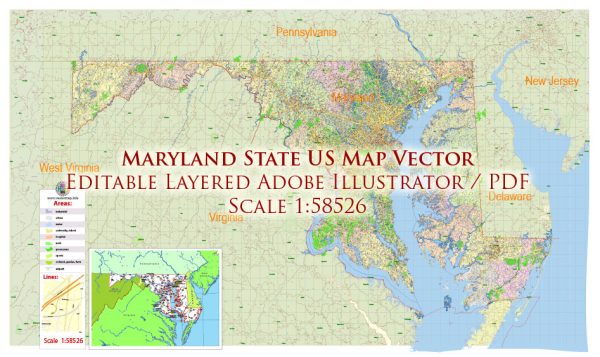Maryland’s history of urban development is a complex and dynamic narrative that reflects the state’s economic, social, and cultural evolution over the centuries. The development of urban areas in Maryland has been influenced by factors such as colonial settlement patterns, industrialization, transportation advancements, and demographic changes. Here’s a general overview of the state’s urban development history:
- Colonial Era (1600s-1700s):
- The earliest urban settlements in Maryland were established by European colonists in the 17th century, with cities like Annapolis and Baltimore playing prominent roles.
- Annapolis, founded in 1649, served as the capital of Maryland and became a hub for political and social activities.
- Industrialization and Transportation (1800s):
- The 19th century saw significant industrialization and the expansion of transportation networks, particularly with the construction of the Baltimore and Ohio Railroad in the 1820s.
- Baltimore emerged as a major industrial and commercial center, attracting a diverse population and becoming a key port city.
- Civil War and Post-War Reconstruction (1860s):
- During the Civil War, Maryland’s strategic location led to economic growth, but the state also experienced social and political tensions.
- After the war, urban areas underwent reconstruction, and Baltimore continued to thrive as a major industrial and transportation hub.
- Early 20th Century:
- The early 20th century brought further growth and development, with the rise of suburbs and improvements in infrastructure.
- The Great Baltimore Fire of 1904 had a profound impact on the city, leading to significant rebuilding efforts and the adoption of modern building codes.
- Mid-20th Century and Civil Rights Movement:
- The mid-20th century witnessed suburbanization and the expansion of metropolitan areas. This trend, common in many parts of the United States, impacted cities like Baltimore and their demographic composition.
- The Civil Rights Movement also left its mark, with Maryland cities experiencing social and political changes.
- Late 20th Century to Present:
- Urban renewal projects in the mid-20th century aimed to revitalize some urban areas, but they also faced criticisms for displacing communities.
- Economic shifts, including the decline of traditional industries, affected urban areas, leading to both challenges and opportunities for redevelopment.
- Today, Maryland’s urban areas continue to evolve, with ongoing efforts to balance economic development, social equity, and environmental sustainability.
- Notable Urban Areas:
- Baltimore: Maryland’s largest city, historically significant for its port and industrial activities.
- Annapolis: The state capital with a rich colonial history and a well-preserved historic district.
Understanding Maryland’s urban development history involves recognizing the interconnected nature of economic, social, and political forces that have shaped the state’s cities and towns over time.


 Author: Kirill Shrayber, Ph.D.
Author: Kirill Shrayber, Ph.D.